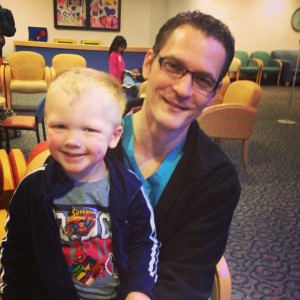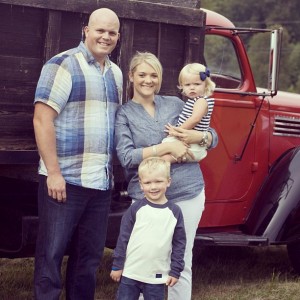
Independence Day has a unique meaning for Greg and Kelsey Garka. It was on July 4, 2008, that their brand new baby boy, Mason, had his chest closed after the first of three life-saving heart operations at Seattle Children’s Hospital.
“His recovery from that day forward went text book well,” Kelsey Garka said. “It was the first step toward the spunky, independent boy he is today.”
Mason, who just celebrated his sixth birthday, was born with Hypoplastic Left Heart Syndrome (HLHS), a congenital birth defect that affects the left side of the heart, which pumps oxygen-rich blood to the body.
The Centers for Disease Control and Prevention (CDC) estimates that about 1 out of every 4,344 babies born in the United States each year is born with HLHS. Because HLHS is a syndrome, the condition represents a spectrum of heart problems, said Dr. Michael McMullan, surgical director for cardiac transplant at Seattle Children’s Hospital.

“In some cases the left ventricle completely fails to develop whereas in other cases the ventricle and its valves are extremely small and, therefore, not able to pump enough blood,” McMullan said. “We haven’t really been able to identify what causes this to happen.”
Many babies with HLHS do not make it to term. Those who do make it face a variety of operations “to convince the heart that it only needs one ventricle,” McMullan said. The first operation generally occurs within the first two weeks of life; the second at six months; and the third between two and four years of age. Even after these operations, some children will still require a heart transplant.
“Nationally, approximately 40% of these children will die by the time they are 2 years of age, even with the operations,” McMullan said, but the survival rate for patients with HLHS at Seattle Children’s is typically much higher.
“It is not one of the more common heart defects that we see,” McMullan said, “But we take care of about three patients per month with HLHS. One thing that distinguishes these children from other children we care for is that they require multiple operations. So, over a period of a few years, we get to know the families very well.”

Mason’s journey has not been without complications, but his results so far have been “remarkable,” says Kelsey Garka.
“Everything we have been through has been completely worth it,” she said. “It’s not always easy, but there is hope.”
“Mason is a very special child,” said McMullan. “He’s the perfect 6-year-old. Looking at him, one would think that there’s absolutely nothing wrong with him. This is why we do it. We want the kids to be normal, crazy kids who live wonderful lives.”
Resources:
- Seattle Children’s Heart Center
- Facts about HLHS
- Congenital Heart Defects

